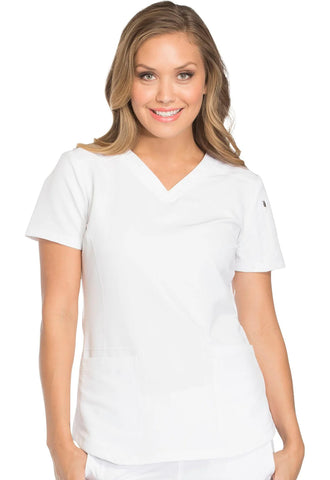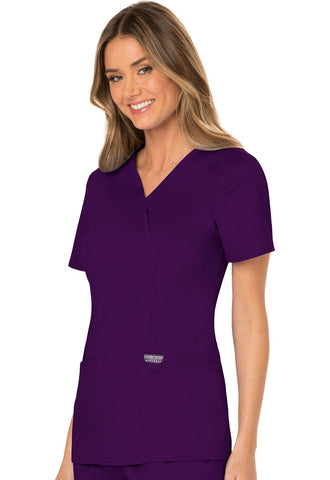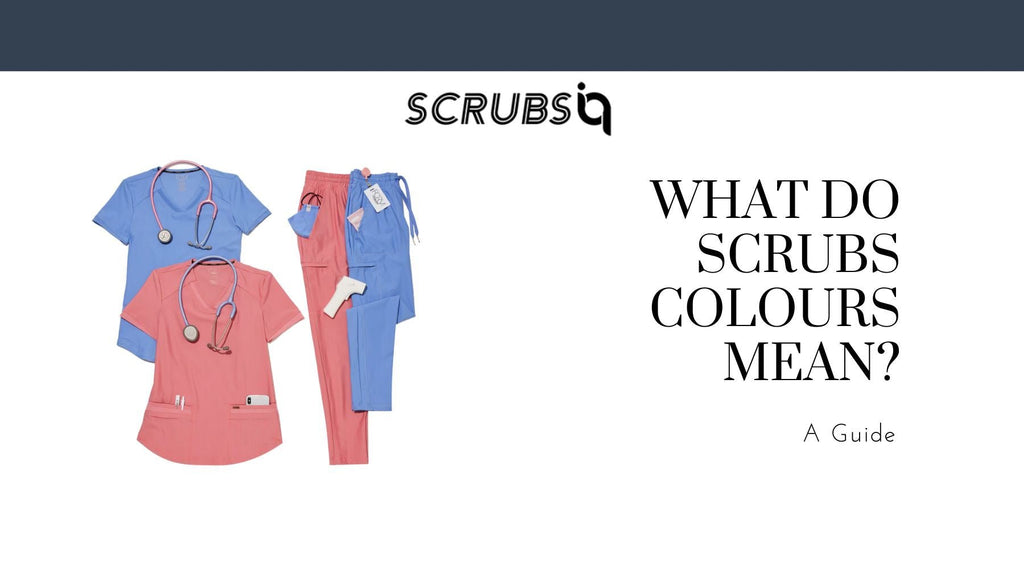As you’ve probably gathered from our fantastic collection of medical uniforms, scrubs come in a great choice of different colours. From navy blue to brown and teal to purple, scrubs are available in almost all the colours of the rainbow. This rainbow of variety ensures healthcare professionals can find the shade that best suits them or their position. However, the colour of scrubs can also help hospitals colour code their wards and differentiate between roles.
If you’re currently looking for a new set of medical scrubs, you’ll need to take this dress code into account when searching for your perfect pair. So, to help you narrow down your options, and get a better idea of why different medical professionals wear different shades, we’re taking a look at all the different colours available and what they could mean for you.
What Different Scrubs Colours Mean
Although there are no set meanings for different scrub colours, there are some well-known conventions that most hospitals tend to stick to. This colour coding allows patients and colleagues to identify roles and responsibilities quickly and easily, something that can be essential in an emergency.
Here then, we look at the general meanings of different colour scrubs, although it's worth noting that these designations are not always accurate depending on the clinic, hospital, and geographic location.
Blue
The colour blue is closely associated with the medical profession, and it’s very common to see a variety of blue scrubs in a hospital or other type of medical setting. The shade of blue can denote the position of the wearer. For example, a hospital might ask medical assistants to wear light blue scrubs, junior nurses to wear ceil blue scrubs and senior nurses or doctors to wear royal blue uniforms. Navy blue scrubs are also prevalent in many healthcare settings due to their practicality and professional appearance. Beyond just aesthetics, the choice of navy blue as a uniform color is often backed by research into color psychology, which suggests that navy blue can evoke feelings of trust, reliability, and competence.
Blue is a good colour choice for a hospital or clinic because it has a naturally calming effect. It also looks smart and won’t appear too dirty after a day on the wards. Blue scrubs are often worn by healthcare workers on general medical wards. Because they’re such a popular option, a number of brands offer a selection of blue nursing scrubs.
White

White is one of the most traditional scrubs colours. Smart and professional, white scrubs are often seen in high-end clinics, dental practices and private health centres. However, white scrubs do have their downsides. Blood stains and other marks will show up clearly on the white fabric and the bright colour can cause eye strain. If you want to avoid these issues, it might be best to stick with darker colours like blue, black, brown and green.
Green

Green scrubs are a popular choice for surgeons and surgical staff. This is because green is the exact opposite of red on the colour wheel. Wearing green can actually help surgeons become more visually sensitive to the colour of blood, something that in turn can make operating easier.
Red

The colour red is closely associated with women’s health. As a result, red scrubs are most commonly seen on maternity, gynaecology and labour wards. A lot of medical professionals that work in these areas also wear scrubs in shades related to red, like pink, burgundy and purple. These colours are often considered warm and welcoming, something that’s perfect for doctors and nurses bringing new life into the world.
Black

Black is probably one of the lesser-seen scrubs colours. Though smart and stylish, it can be a little austere and unapproachable. This makes it a poor choice for paediatric and emergency departments. You can soften the look of your black scrubs with light lab coats or scrubs jackets.
Brown

Like black, brown is a relatively uncommon choice for scrubs. While it may be a good option if you want to hide stains and marks, it’s not the most welcoming colour of scrubs. Again, brown scrubs can be brightened up by wearing a colourful jacket over your scrub top or by investing in a bright scrubs hat.
Purple

Safety Considerations Related to Scrub Colours
There are two main safety issues to take into consideration when choosing different scrub colours. These are identification and usability. Being able to quickly and easily identify a doctor or nurse can make a significant difference in an emergency. In order for any type of colour coding system to be effective, it’s important that everyone in a medical facility knows what scrub colours mean. It’s also essential that all staff stick closely to specific colour codes and conventions.
The other main safety consideration is usability. As we’ve already seen, a bright white coat or white scrubs can cause eye strain. This can be a serious safety concern for surgeons and other healthcare professionals who do precise, intricate work. Conversely, it’s also important that scrubs are light enough to show blood stains and other marks. Being able to spot a bleed early can help when treating patients. So, if you work in an emergency department, black and brown may be colours to avoid.
Importance of Colour-Coded Medical Scrubs
Colour coded medical scrubs can help your hospital to organise its workforce, reinforce staff morale and help patients to navigate their way around the space. They can also encourage employees to build a sense of identity and help new members of staff to more easily identify their colleagues.
If you’re unsure which colour scrubs are right for you, talk to your hospital or healthcare provider about their colour requirements, or take a look to see what shades your colleagues are wearing. To find out more, and to explore our fantastic collection of high-quality designer scrubs, take a look around or contact a member of our team today.

